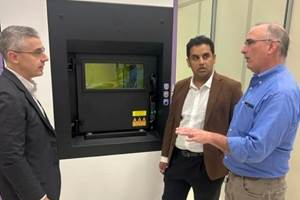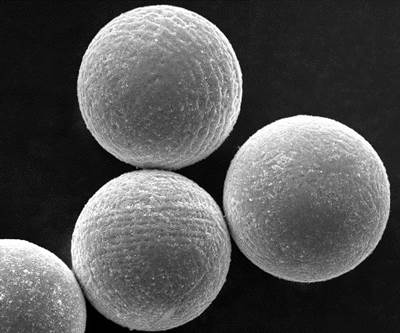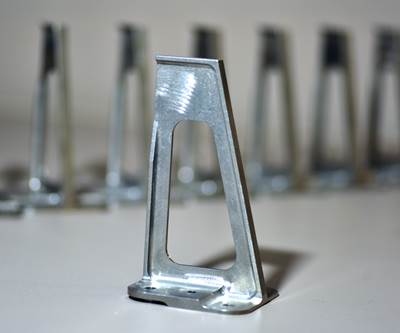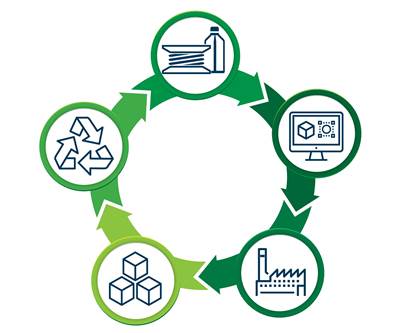Can the U.S. Become Self-Sufficient in Aerospace Alloy Metal Powders?
6K’s technology can upcycle titanium and nickel-alloy parts into additive manufacturing powder. Here is how the circular economy helps national security.
Share
The circular economy entails a mode of production aimed at resource conservation. Could it also be a key to national security?
The U.S. Department of Defense believes so. Through its Defense Logistics Agency, the DoD is funding research with metal provider 6K aimed at achieving an entirely domestic supply base for additive manufacturing (AM) metal powder in nickel- and titanium-based aerospace alloys crucial to defense. Material recapture consistent with a circular-economy framework for production will be at the heart of this.
The term “circular economy” is generally associated with sustainability. With material reclaimed rather than going to waste, end-of-life products provide material for future production. But this same idea can also dramatically increase the material available to the DoD within U.S. borders. 6K’s capabilities offer the chance to not just recycle end-of-life components made of aerospace alloys, but also “upcycle” the metal into AM powder, a higher-value form, making possible the domestic supply of this raw material.
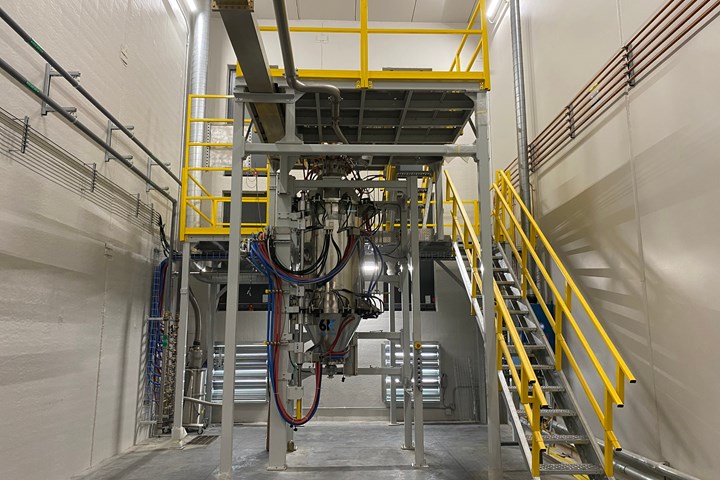
6K’s propriety process for making AM powder employs microwave plasma furnaces such as this one at its Pittsburgh plant. Photo credit: 6K
Today, nickel- and titanium-based alloys used in aircraft and other military hardware are made from raw materials that are often imported. The result is a potential point of vulnerability during a conflict. For example, a 2020 White House memorandum noted the vulnerability resulting from U.S. reliance on foreign suppliers for the form of titanium that goes into making titanium alloys.
The good news is this: The U.S. theoretically already has sufficient amounts of these crucial alloys. It is just that the material is not in the right form. It exists as machining scrap, or, more notably, as unused components in aircraft boneyards.
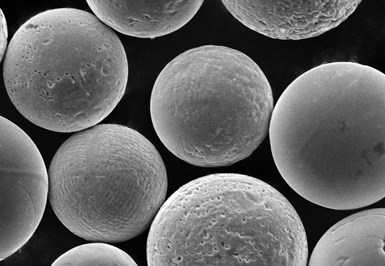
“Upcycling,” for 6K, means converting existing parts and scrap in titanium and nickel alloys into a form like this: precisely spherical powder suitable for AM. This microscopic view shows Inconel 718 powder. Photo credit: 6K
Enter 6K. The company has proprietary technology for converting metal scrap and parts into powder. Indeed, once the convertion gets rolling and end-of-life titanium- and nickel-alloy parts and scrap can keep on being reclaimed, the result could be an infinite supply of this raw material.
That promise is how 6K CEO Aaron Bent, Ph.D., and chief marketing officer Bruce Bradshaw characterized the possibility to me in a conversation about the DoD work. Typical recycling of metal isn’t circular; it’s a downward spiral. The scrap is recaptured in lower-value forms than the original. Truly upcycling aerospace alloy scrap and parts into AM powder hasn’t been practical before, they say, in part because of the cost-prohibitive necessity to refine the material into an intermediary form to make possible conversion to powder. 6K’s process avoids this step. Raw stock that has merely been mechanically ground into a rough powder can be processed into the precisely spherical powder useful for AM, thanks to 6,000°F microwave plasma furnaces in operation at the company’s Pittsburgh plant. Powder for metal injection molding (MIM) and powder forging can be made this way as well. The Defense Logistics Agency’s current funding consists of a Phase II Small Business Innovation Research (SBIR) program to “support the development and commercial supply chain” for these powders, 6K says.

The company’s process is cost-effective for converting existing parts into powder because the intermediary step is relatively easy. Scrap and parts are mechanically ground into rough powder like this.
Bent notes keeping the supply domestic and thereby protecting against disruption are not the only benefits. Sourcing the metal powder via recapture will improve cost and quality as well.
He says, “Material purchased from foreign providers potentially comes with unknowns — unexpected performance anomalies.” This is controllable within a purely domestic closed loop. “Using certified scrap as raw material ensures the raw stock already meets desired specifications. Powders made from this scrap will leverage the investment the DoD has already made in assuring the material’s quality.”
Related Content
Beehive Industries Is Going Big on Small-Scale Engines Made Through Additive Manufacturing
Backed by decades of experience in both aviation and additive, the company is now laser-focused on a single goal: developing, proving and scaling production of engines providing 5,000 lbs of thrust or less.
Read MoreWhy AM Leads to Internal Production for Collins Aerospace (Includes Video)
A new Charlotte-area center will provide additive manufacturing expertise and production capacity for Collins business units based across the country, allowing the company to guard proprietary design and process details that are often part of AM.
Read MoreAt General Atomics, Do Unmanned Aerial Systems Reveal the Future of Aircraft Manufacturing?
The maker of the Predator and SkyGuardian remote aircraft can implement additive manufacturing more rapidly and widely than the makers of other types of planes. The role of 3D printing in current and future UAS components hints at how far AM can go to save cost and time in aircraft production and design.
Read MoreNew Zeda Additive Manufacturing Factory in Ohio Will Serve Medical, Military and Aerospace Production
Site providing laser powder bed fusion as well as machining and other postprocessing will open in late 2023, and will employ over 100. Chief technology officer Greg Morris sees economic and personnel advantages of serving different markets from a single AM facility.
Read MoreRead Next
6K's Onyx In718 Metal Powder Created from Sustainable Sources
6K’s Onyx In718 premium nickel alloy metal powder is said to be derived from certified chemistry sustainable sources.
Read MoreWhat Is the Role for Additive Manufacturing in Aircraft Structural Components?
Spirit AeroSystems recently began installing the Boeing 787’s first titanium structural component to be made through AM. The part is not critical but also not minor. I spoke with manufacturing leaders at Spirit about the meaning of the part and the way forward for additive in aircraft structures.
Read MoreAdditive Manufacturing Will Aid And Accelerate The Circular Economy
A circular economy links material, design, manufacturing, product and end-of-life in a continuous, sustainable loop. This special report illustrates the roles for 3D printing every step of the way.
Read More






